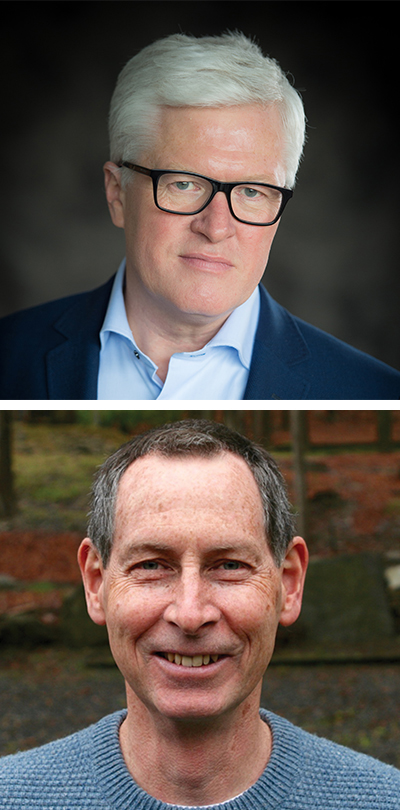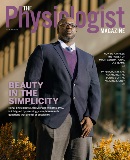APS Executive Director Scott Steen, CAE, FASAE, invited Terry Sweeney, PhD, FAPS, newly appointed chair of the APS Center for Physiology Education (CPE), to discuss the encouraging trends in physiology education today, the foundations of the Center and the offerings he’s most looking forward to bringing to the physiology community. Here’s an excerpt of their conversation:
 STEEN: How would you characterize the state of physiology education right now in America? And what do you think the biggest challenges we’re facing are?
STEEN: How would you characterize the state of physiology education right now in America? And what do you think the biggest challenges we’re facing are?
SWEENEY: For some years, physiology education in America
has really been undergoing a considerable amount of change at all the different levels of education. I learned a lot about this in the past year, as we developed the APS Center for Physiology Education, working with the task force and their goals,
as well as with focus groups vetting those goals. What I learned through that was at the medical school-level, classic courses in medical physiology have been merging with clinical and problem-based learning approaches.
In the process, the identity of physiology at that level has started to become somewhat obscure. Also, at the graduate level for doctoral and master’s programs, the focus has been on these amazing discoveries at the cellular and molecular level and utilizing all those amazing techniques that have come about. But a lot of members have expressed concern about the depth of training in integrative physiology, even at the graduate level. In fact, I was talking to a colleague who said that some of the graduate students who come into their physiology graduate program have never even had a physiology course, like an introduction to physiology or a general physiology course.
On the other hand, physiology programs, which were almost completely the domain of graduate education, are now experiencing a huge growth at the undergraduate level, and that, ironically, is helping to reclaim the domain of physiology. Hopefully, that is preparing our next generation of physiologists, not only in the biomedical realm, but in graduate school, in medical education and so forth.
STEEN: When I was interviewed for my job as APS executive director, one of the biggest concerns expressed by the search committee was this idea of the identity of the discipline, that perception of the discipline had shifted. Even though
our members were working on all sorts of cutting-edge things, that the public perception of physiology had changed, largely driven by what was happening in medical schools and in other institutions of learning. So, do you think now that identity is
going to be defined at the undergraduate level more?
SWEENEY: Well, I think it is a sort of evolutionary process. It does seem to be most clear right now at the undergraduate level, but of course if we look forward many years,
those students are the ones that are going to be populating our graduate programs and ultimately are going to be our medical educators and so forth. So, I feel that it is an opportunity for the reemergence of physiology at those more upper levels
as the understanding of what physiology encompasses becomes, once again, more clear.
But we are experiencing that identity crisis because even for the undergraduate programs, when we talk to high school seniors that are coming to evaluate our programs, their understanding of physiology is not good. It’s almost in their freshman year when they take their general biology course and they start to study muscle function and nervous function and digestive function and so forth that we can then say, “This is physiology. This is why it’s important and why you should take an integrative approach to how you learn these things.”
STEEN: What do you think are the most promising trends in physiology education right now? What makes you hopeful?
SWEENEY: I would say one of the things that makes me hopeful is this emergence of physiology as a discipline
at the undergraduate level, and in particular, the focus on integrated physiology at that level. Secondly, as you know, APS has begun this emergence of the Center for Physiology Education, one of three APS cornerstone initiatives from its recent strategic
plan. And as we worked to launch this, we heard nothing but enthusiasm for building a community that could drive the best practices in physiology education, not just at the undergraduate level, but at the graduate level, at the medical school level,
and helping to ensure that our next generation of physiology educators can take that integrative approach and reclaim the identity of physiology in the educational realm.
STEEN: What do you see as the major goals for the center?
SWEENEY: Our task force that APS put together to come up with the goals and objectives for the Center for Physiology Education had a broad base, and
we got a lot of input. We also then did focus groups to vet the goals and objectives that we came up with. And far and away, the most important thing that people wanted was a vibrant and inclusive community of physiology educators. They wanted to
be able to reach out to people that were like-minded, that could contribute new ideas as well, and not only have a place where they could garner information, but a place where they could share their own discoveries about how to best teach integrative
physiology and so forth. So, this idea that we could develop a shared vision of physiology education and tailor it for each level of instruction that’s, I think, the most promising idea.
STEEN: I know already there are works underway to develop a host of resources and offerings for the Center. What are your priorities?
SWEENEY: Based on the goals and objectives, we then went on to develop the key themes
that we hope will be driving the CPE for the next few years. Those include evidence-based teaching practices, inclusive teaching—and inclusive teaching means bringing in ideas like gender and racial differences in physiology and so forth—teaching
and learning integrative physiology, promoting physiology research, and finally curriculum development. These are the things that we heard the greatest need for.
We really want to start our offerings with teaching and learning integrative physiology. We’ve started to do this by tapping into the expertise of APS members. We’re asking them to create presentations on teaching and learning of physiology and to link it back to the integrative nature of physiology, as well as link it to these core concepts in physiology that we really feel are the cornerstone of an integrative approach to teaching physiology.
STEEN: You talked about the importance of the Center developing community, and that is a real need within the physiology educator community. What do you think that looks like? How does that manifest itself when the Center is built out?
SWEENEY: We want it to have several different aspects. We’d like to have an annual meeting that can allow people to meet face-to-face and talk about their ideas and best practices. But more than that, we have to have something
that’s more immediate and available. So, we’re developing a learning management system that can not only be a home for content that we create and we curate, but that will let people interact. We also want to take advantage of some social
media tools so that people can actually have that type of community that’s available to them almost on a 24/7 basis.
A lot of these things are still being built out, and we’re trying to figure out the best ways to do that. We want it to be a continuous community, not just something that’s present at a once-a-year meeting, but that people can reach out to, gain information from and contribute to.
This article was originally published in the May 2022 issue of The Physiologist Magazine.
Watch the Full Conversation
The Physiologist Magazine
Read the Latest Issue
Don’t miss out on the latest topics in science and research.
View the Issue Archive
Catch up on all the issues of The Physiologist Magazine.
Contact Us
For questions, comments or to share your story ideas, email us or call 301.634.7314.


